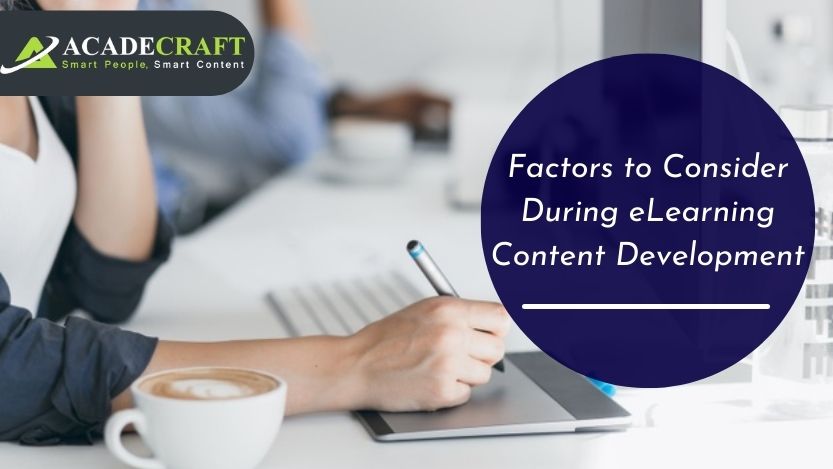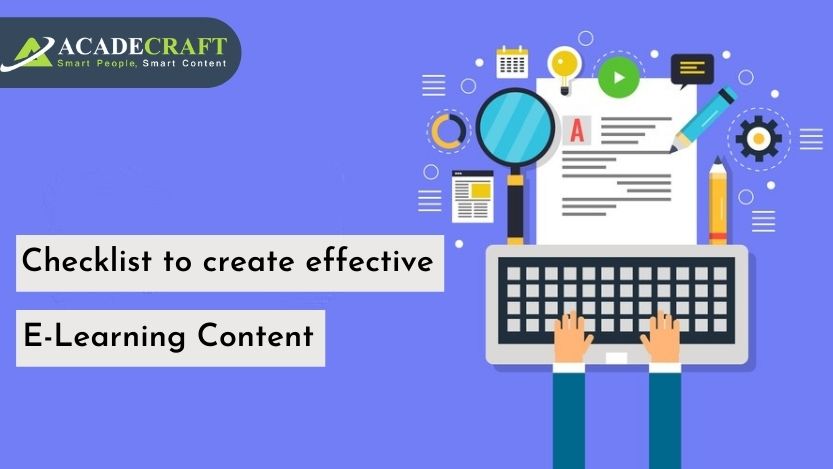
E-learning played an important role in imparting knowledge and several professionals grown and reach bigger milestones even with remotely working. Thanks to eLearning, that made it possible for organizations to use effective and engaging mediums to teach and train employees. E-learning platforms are a useful tool in corporate training because they are flexible and cost effective. There are plenty of online e-learning service providers to aid the training requirements of corporates. However, if you are trying to develop your online training course, e-learning content development might be the trickiest task for you. Hence, we brought a perfect guide for beginners that will help you best quality learning solutions.
Understand your audience and meet their requirements, because they are only at the receiving end. Before initiating the development process, think about why your learners require it? Why is it useful for the audience? These questions will help you understand the learners? requirements and you can curate the content according to their requirements. Understand why your learners will be emotionally engaged and invest their time in learning. Once learning objectives are clear and finalized, it is easy to create learners friendly content.
A graduate level employee has better understanding skills compared to a high school pass employee. So content developers must take the educational level of different employees into the account to make the course relevant to learners. Here you can take guidance from subject matter experts for a better understanding of developing content. They will help you developing content that fits all learners and act as a behind the screen players.

Your eLearning content must be compatible with every device. It should not restrict to one single device like mobile. Your employees use multiple devices, so before e-learning content development services it is best to analyze the device compatibility. Develop a responsive design of a Learning Management System that will be adaptable to all devices of all screen sizes and operating systems. It should support an HTML5 framework that seamlessly works across multiple devices. Your developed content will be more attractive for consumption as the workforce can access it whenever they want.
As mentioned above, the education level of your workforce may vary in your team. Your e-learning content must have learner centric approach and offer them personalized learning solutions. Accommodate different kinds of learners and meet their learning requirements. You can have the self-paced learning approach by making content easier. Use webinars, facilitators, voice chat, chats, video conferencing, asynchronous and on-line tutoring, etc. to make it easy. It bridges the gap between instructors and learners and provides learners to learn at their own pace. They can access the content whenever and wherever they require.
Sometimes more research leads to lengthy content that your learners may not prefer. Create less duration content in form of short videos, texts, and multimedia solutions. It should be more concise and carefully selected for your training activity. Developers can use microlearning principles to create bite sized chunks of the content for a flexible learning experience for learners.
Only developing the content is not enough. You need to regularly evaluate its efficiency and take the learner?s feedback on your course. You can do it by quizzes, tests, and gauging employee responses. Develop a feedback mechanism ingrained in the core of your eLearning content. Have a well designed assessment plan to evaluate the learning outcomes.
Conclusion
E-learning Content Development is a thoughtful process and you require proper strategy from understanding audience to content curation. Make use of different tools that make your product accessible and user friendly. Make your learning solutions flexible and consider different learner?s requirements. If you are unable to follow these above tips, then feel free to connect with us!
Share